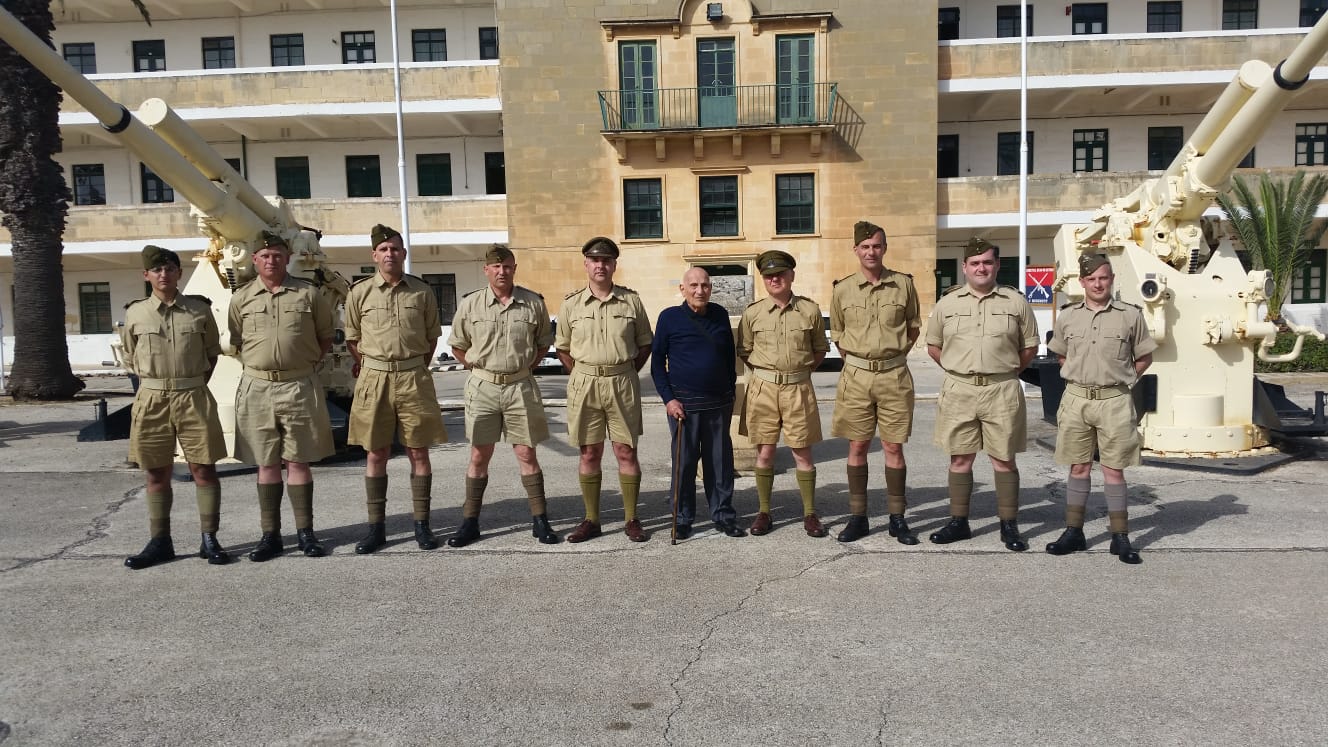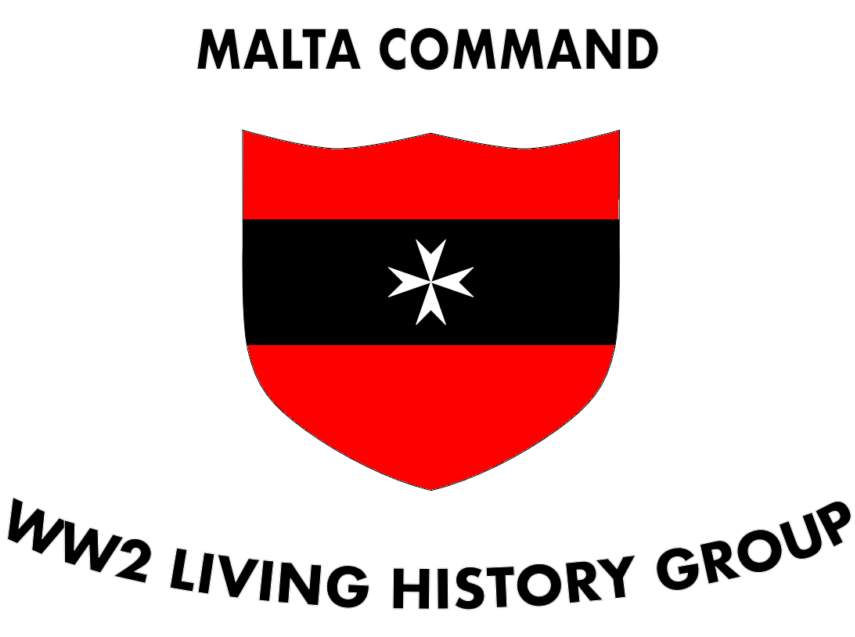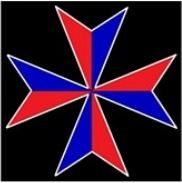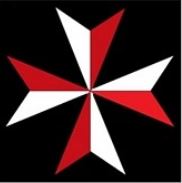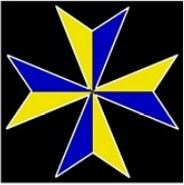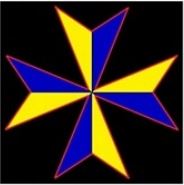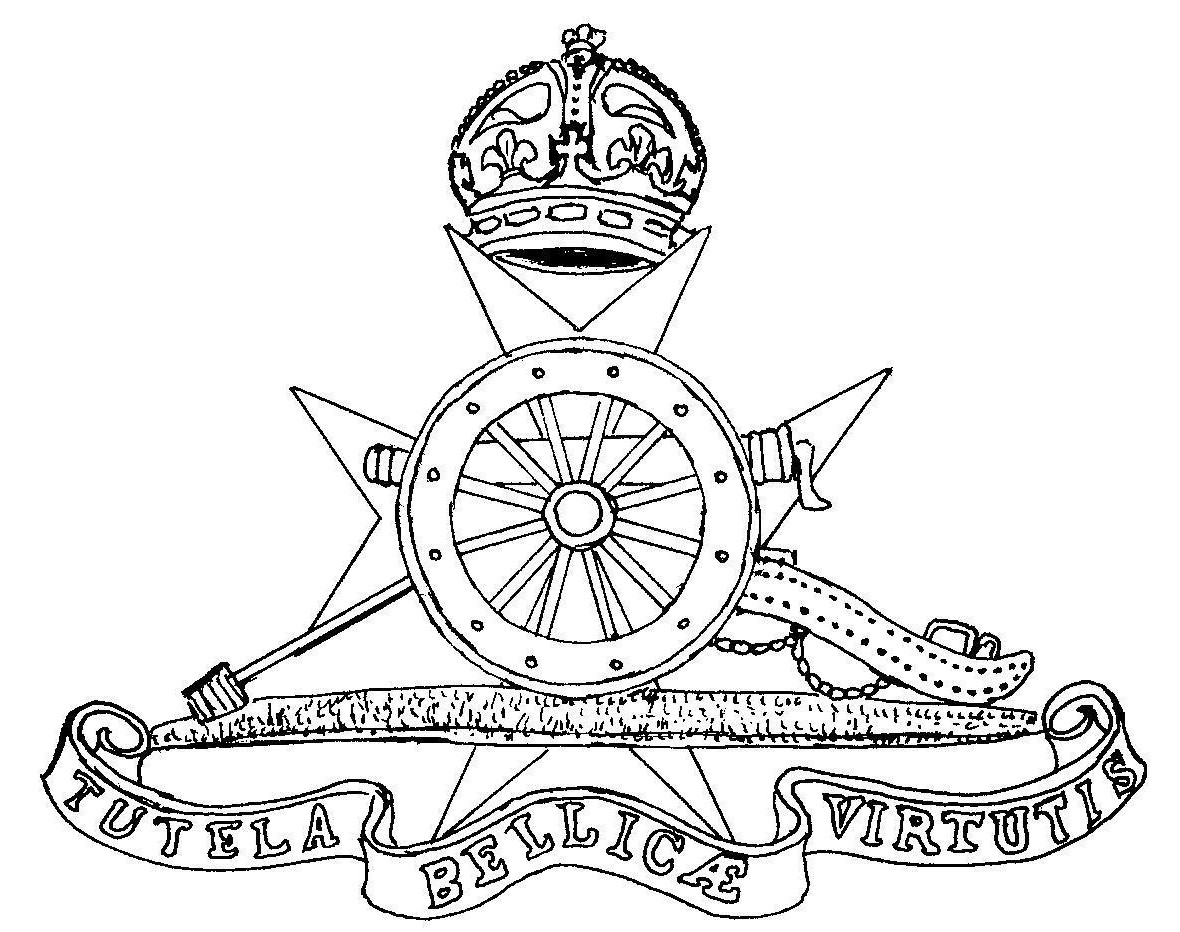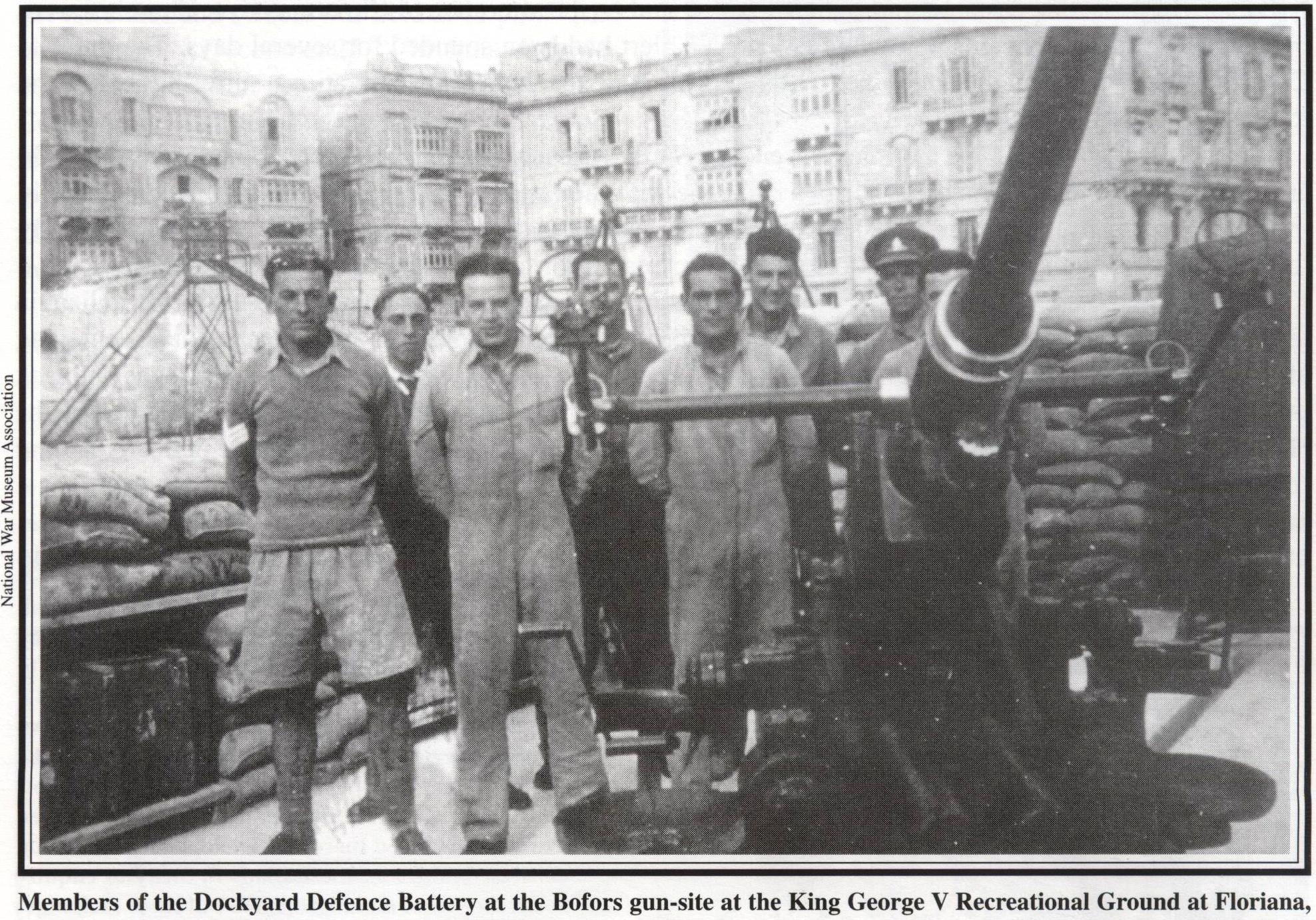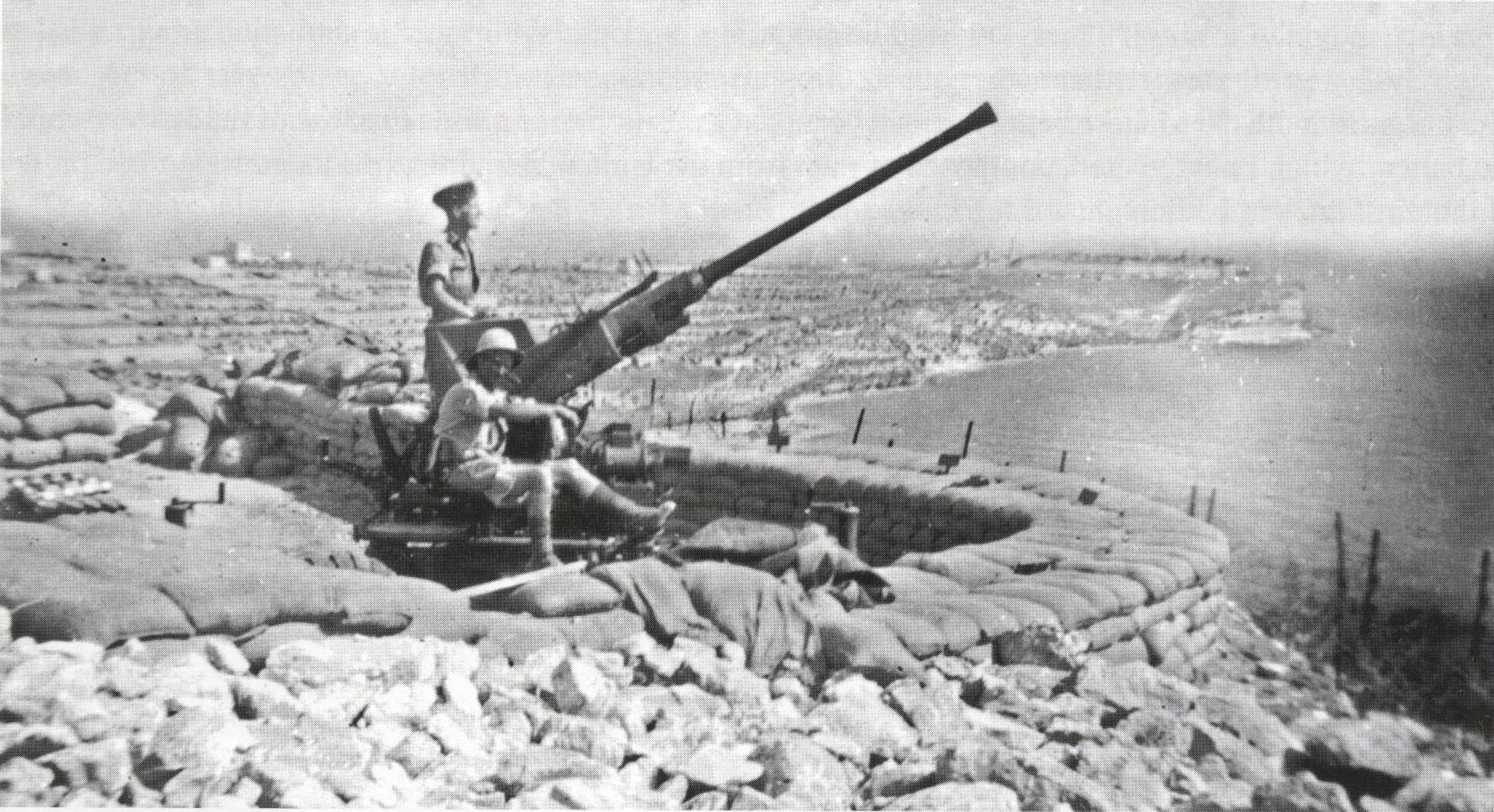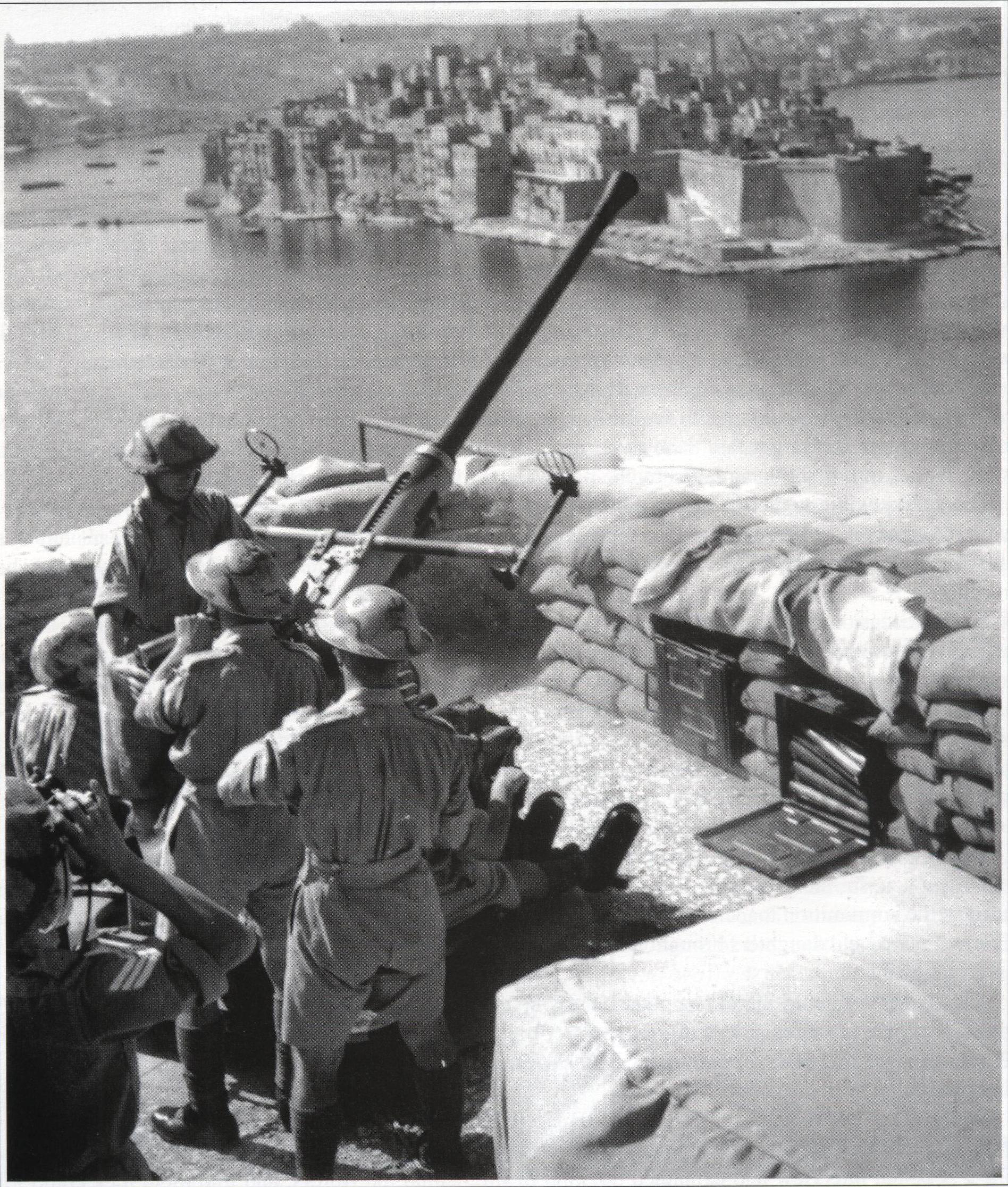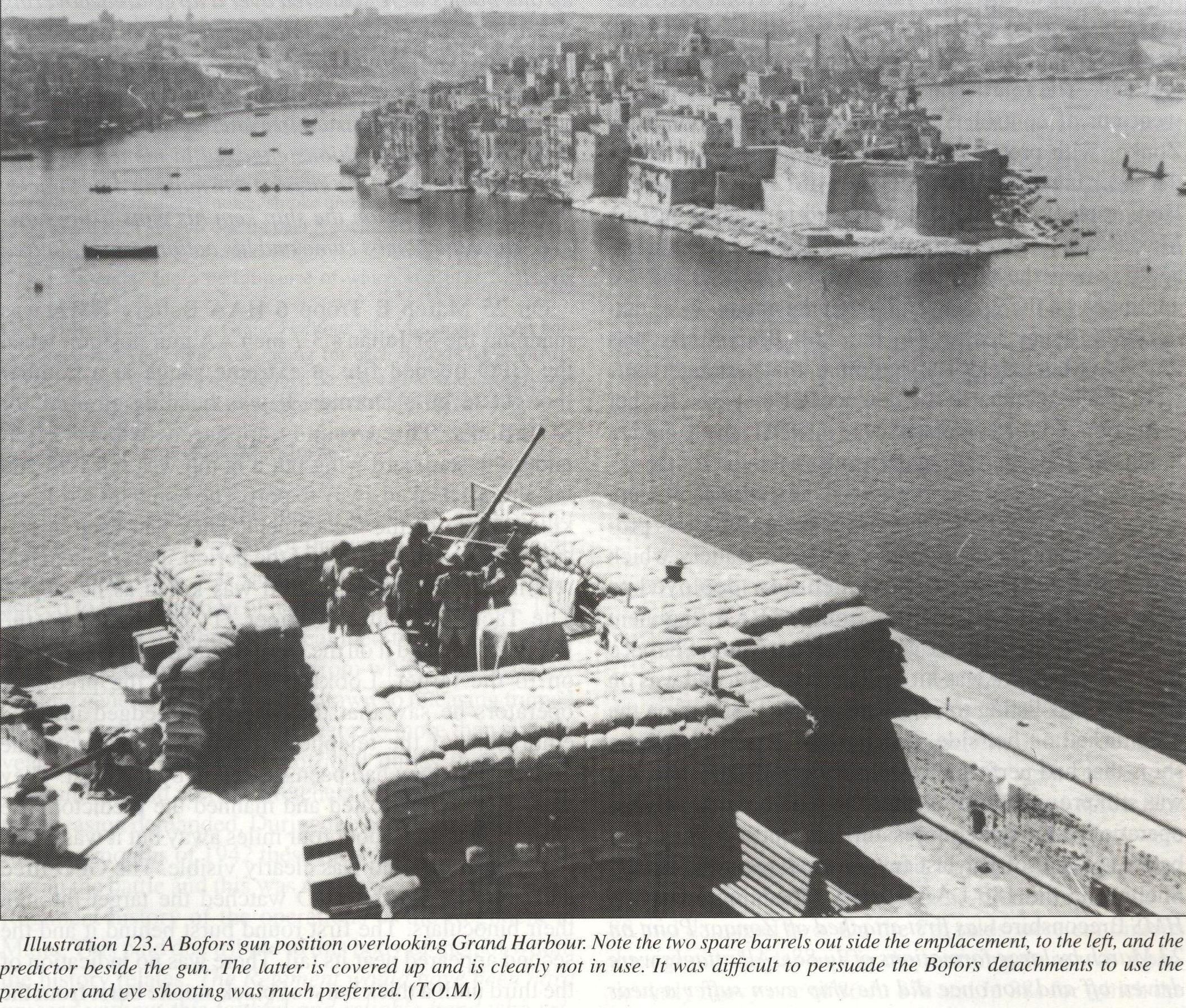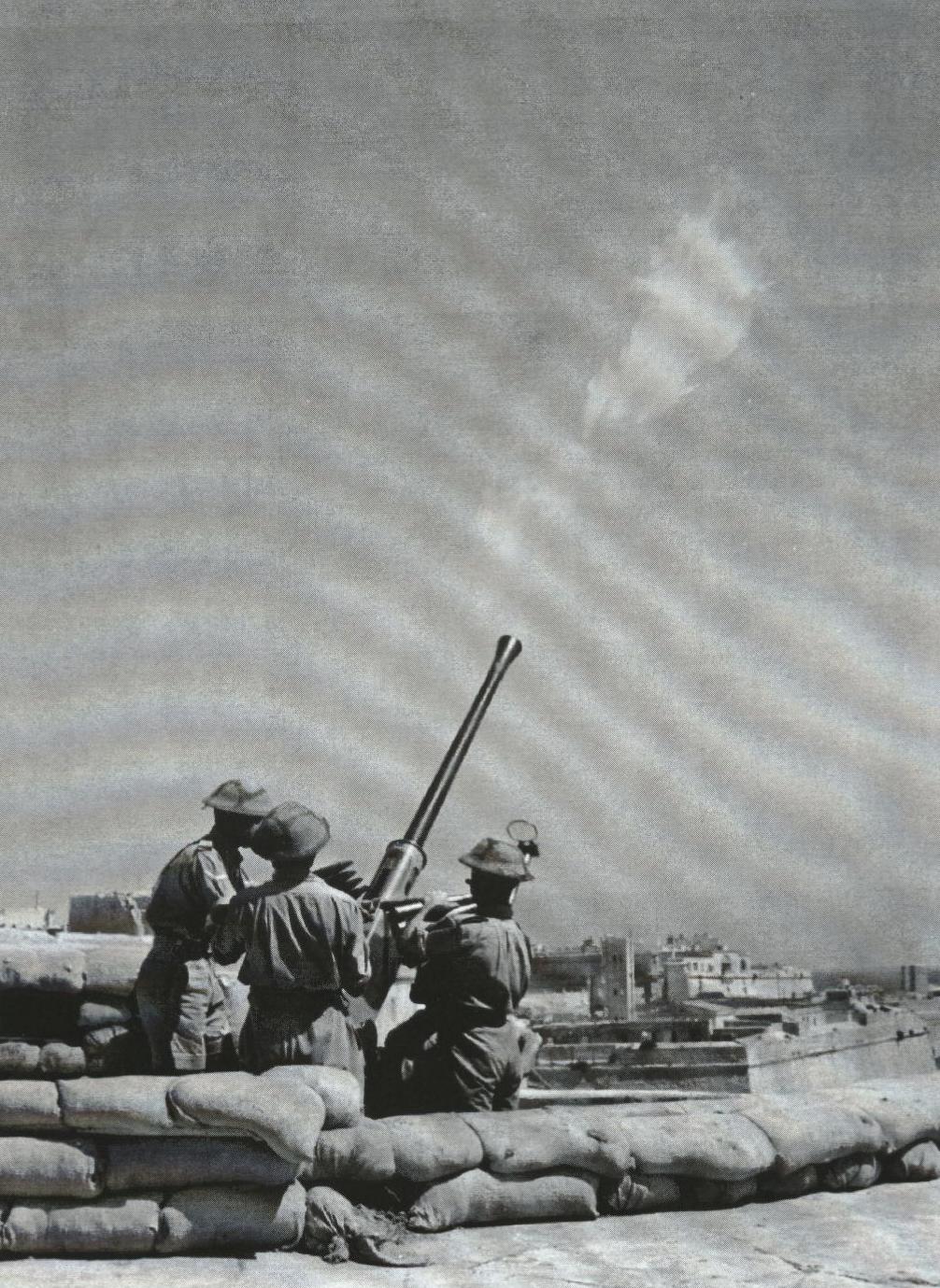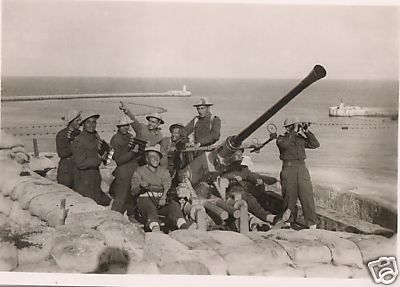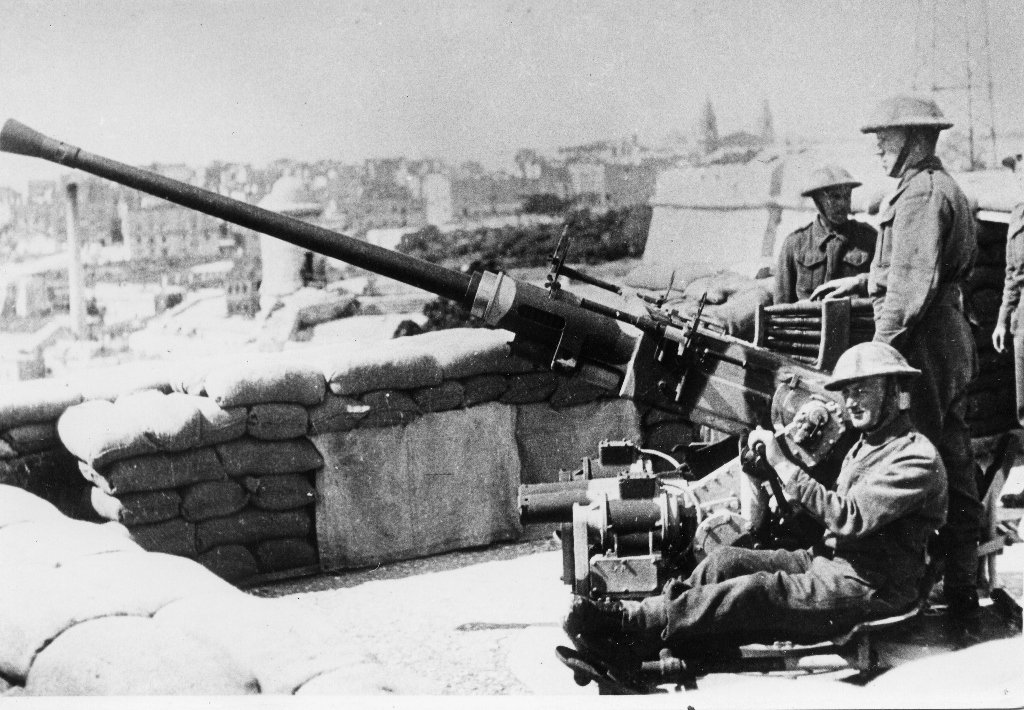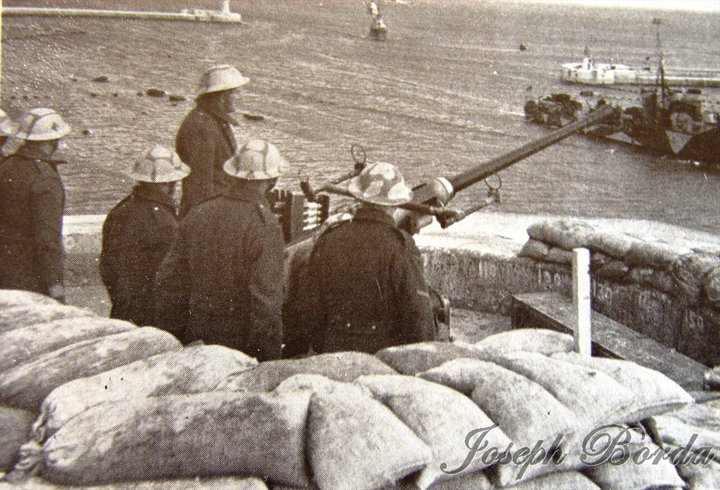The Royal Malta Artillery was set up on 15th March 1889, with the specific aim of manning the guns around the Grand Harbour, which apart from being the point of connection with the rest of the world, was also important as a base for the Royal Navy.
In time, more roles were created to cater for the great advances in the science of warfare, especially during WW1, so that by the beginning of WW2 the R.M.A consisted of the following:
- The 1st Coast Regiment,
- The 2nd Heavy Anti-Aircraft Regiment
- The 11th Heavy Anti-Aircraft Regiment (with 1 battery equipped with Bofors Light AA guns )
- And a Joint RA/RMA 4th Searchlight Regiment
There was also the Dockyard Defence Battery, composed of workers at the Admiralty Dockyard who alternated between manning their guns and working at their trade.
Click on the badge sketch below to find out more about the history of the regimental badge
In March 1941 the 3rd Light Anti-Aircraft Regiment was formed, entirely equipped with the famous Bofors 40mm Gun.
Our Group reenacts a Gun Detachment of this Regiment, as we are lucky enough to own a Bofors gun. We chose 22 Battery, as this was the first RMA unit equipped with the Bofors while still forming part of the 11th HAA Regt.
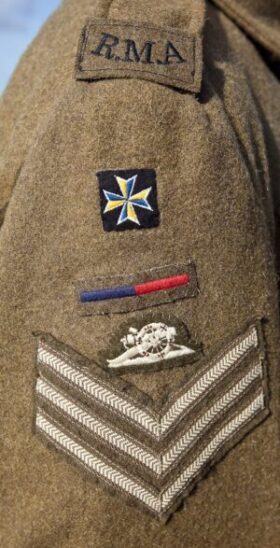
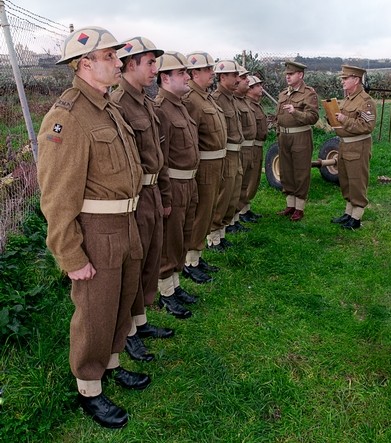
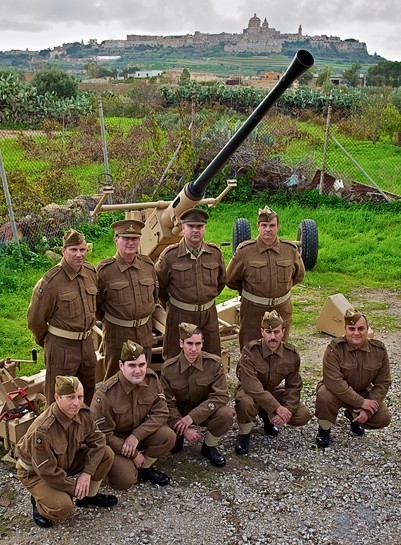
This battery was transferred to 3rd LAA Regt upon its formation, together with the Dockyard Defence Battery, now renamed 30 Battery. Another battery, the 10th, was created to bring the Regiment up to full establishment.
Six guns and their crews were formed into a Troop, with three Troops then forming a Battery. Therefore 3rd Regiment’s 3 batteries comprised a total complement of 54 guns.
The Bofors gun was supplied in both mobile and static versions, and most of them were equipped with a sophisticated fire control system which, used a Predictor to aim the gun to the future position of the target aircraft automatically after having had the range, speed, bearing, attitude of the target (climbing, diving or level flight) inputted.
But this system needed careful setting up, and a generator to provide power for the Predictor and also for the motors which traversed and elevated the gun. It was not favoured by the crews, who preferred to manually aim the gun….”It was more personal……and anyway the generator was a pig to start!”
The Bofors had a rate of fire of 120 rounds a minute, although crews were advised to normally use single well-aimed shots. Nevertheless the never-ending raids on Malta meant that great amounts of ammunition were expended, creating enormous problems to keep the Island supplied.
The Bofors gunners’ main task was to engage enemy aircraft flying below the operating ceiling of the 3”, 3.7” and 4.2” heavy AA guns. The static guns were emplaced in the fortifications around the Grand Harbour and the Dockyard, while the mobile ones were frequently moved to various sites all over Malta, mainly around the other primary targets, which were the Ta’Qali, Luqa and Hal-Far airfields.
Their task was rendered more difficult by the acute shortage of ammunition, with little chance of getting supplies through an enemy-controlled Mediterranean. At one time the situation was so bad that the Gunners were ordered not to fire any more so as to preserve the ammunition for the impending invasion.
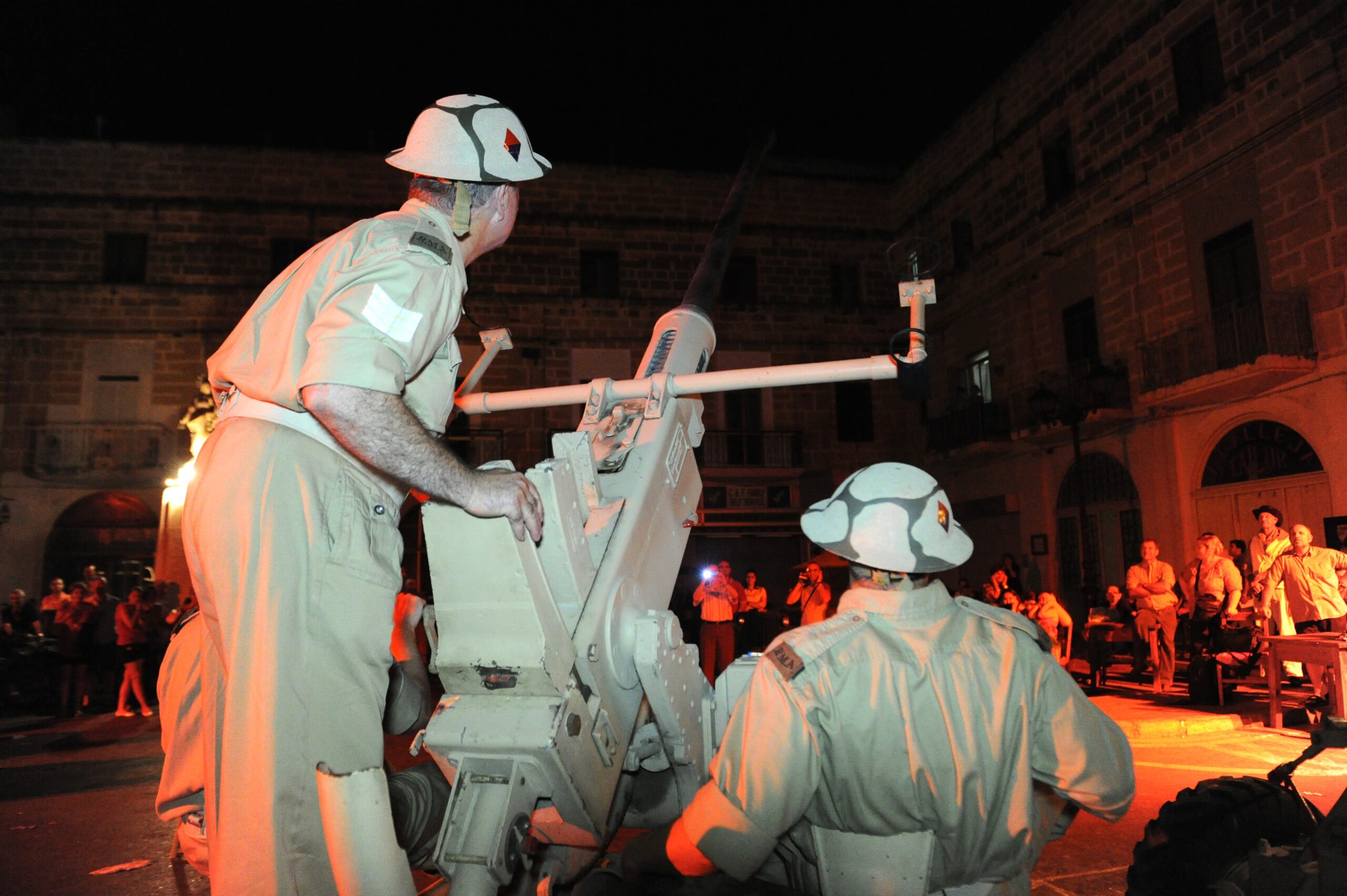
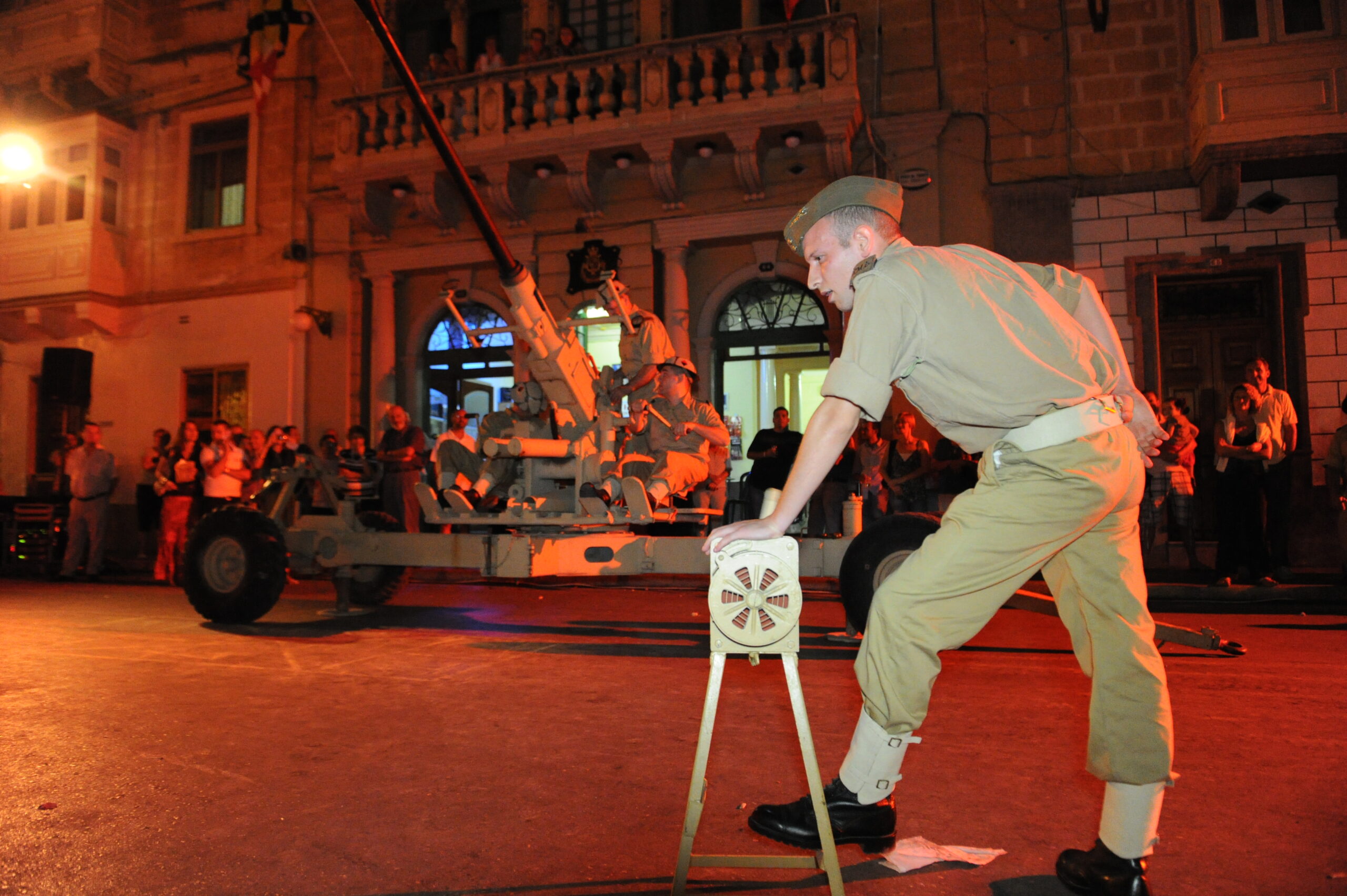
In one instance during this period, a lone Messerschmitt Bf 109 was seen flying around, the pilot probably being pleasantly surprised at not being given the usual hot reception. He got bolder, eventually coming down so low as to pass in front of and level with a Bofors emplaced on a hill overlooking Luqa airfield. This proved too much for the detachment, who fired off one round instantly destroying the plane.
Almost immediately the phone rang, with someone from HQ asking if they had fired! The obvious answer was “No Sir, not us!” The barrel was quickly removed and replaced on the gun by the spare barrel, a procedure usually carried out during firing to prevent overheating. It was then cleaned out and oiled. Meanwhile another round was fetched from a small hoard stashed away when ammunition was still plentiful.
No sooner had they done this that some staff cars arrived with high-ranking officers who swarmed all over the place, checking the gun and the ammunition thoroughly. But they left empty-handed, to go and inspect the other guns in the area. Who knows what they wrote in the official report? Maybe ‘enemy plane shot itself down’?
Apart from ammunition, all other essentials were in short supply. The food situation was so bad that the whole population, civil and military, was on near-starvation rations, which also facilitated the spread of disease.
The hardships and privations suffered by the Maltese AA gunners during the 1940-43 siege were shared with their British counterparts, which consisted of:
- 32 LAA Regt. Royal Artillery
- 65 LAA Regt. Royal Artillery
- 74 LAA Regt. Royal Artillery
- 107 LAA Regt. Royal Artillery
- 117 LAA Regt. Royal Artillery
- 4LAA Regt Royal Marines
- 4 HAA Regt. Royal Artillery
- 7 HAA Regt. Royal Artillery
- 10 HAA Regt. Royal Artillery
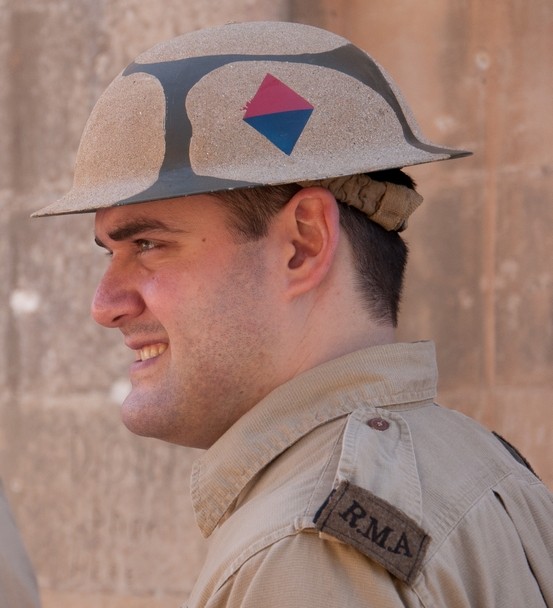
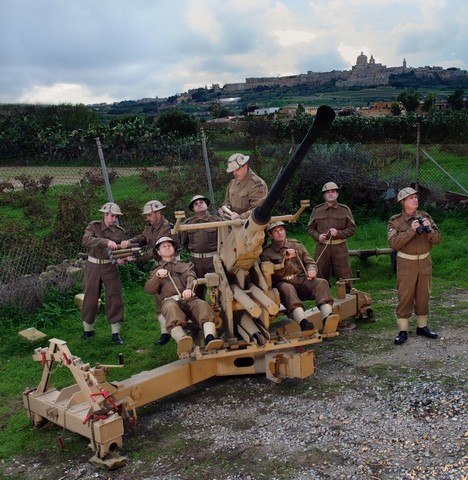
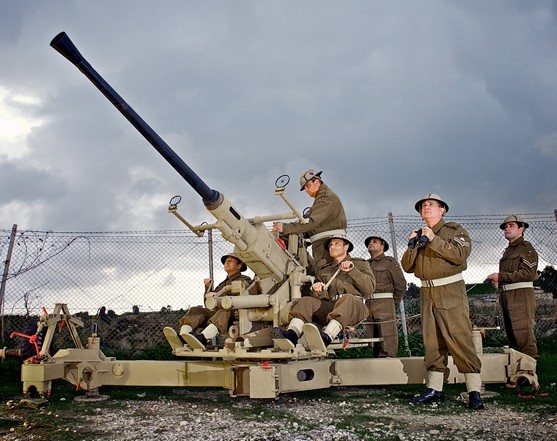
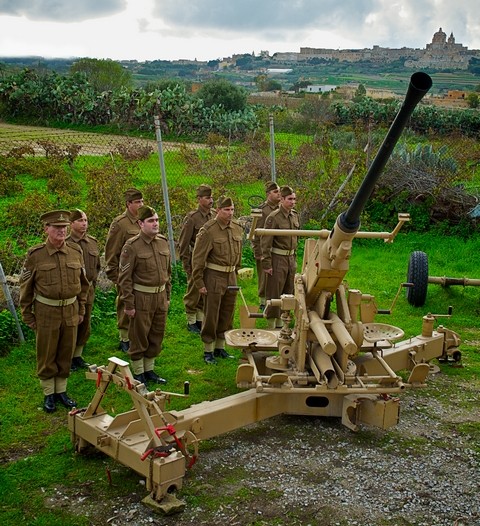
Together the gunners showed courage and determination under the ferocious attacks by German and Italian planes, hitting back hard and earning for themselves the reputation of “The deadliest Gunners on Earth!”
3rd LAA Regiment, RMA was disbanded at the end of the war, only to be reformed in September 1951 as a Territorial Regiment, along with the 11th HAA Regiment. When the British Army switched to guided missiles for defence against high-flying aircraft, 11th HAA was turned into a LAA regiment, and some time later it was amalgamated with 3rd LAA, to form the 3/11th Light Air Defence Regiment, RMA (T) as part of the post-Independence Malta Land Force. 1st Regiment RMA served in the British Army of the Rhine from 1962 to early 1970.
In August 1970, the Armed Forces of Malta came into being with some 500 officers and men plus equipment transitioning from the British Army to the Maltese Government’s responsibility.
The established Malta Land Force (MLF) saw the merger of HQ Royal Malta Artillery (RMA) with HQ Malta Land Force (MLF) on October 1st, having received its regular compliment along with 1st Regiment RMA and the RMA Band. On this same day, a farewell was also made, on disbandment, to the 3/11th AD Regt. RMA (T) and to the 1st Battalion The King’s Own Malta Regt. which comprised the two remaining units of the Territorial part of the MLF.
A few years later the RMA was disbanded, with effect from the 31st March 1972.
The Maltese military successfully transitioned from an artillery regiment within the British Army, to a small defence force under the Government of Malta.
